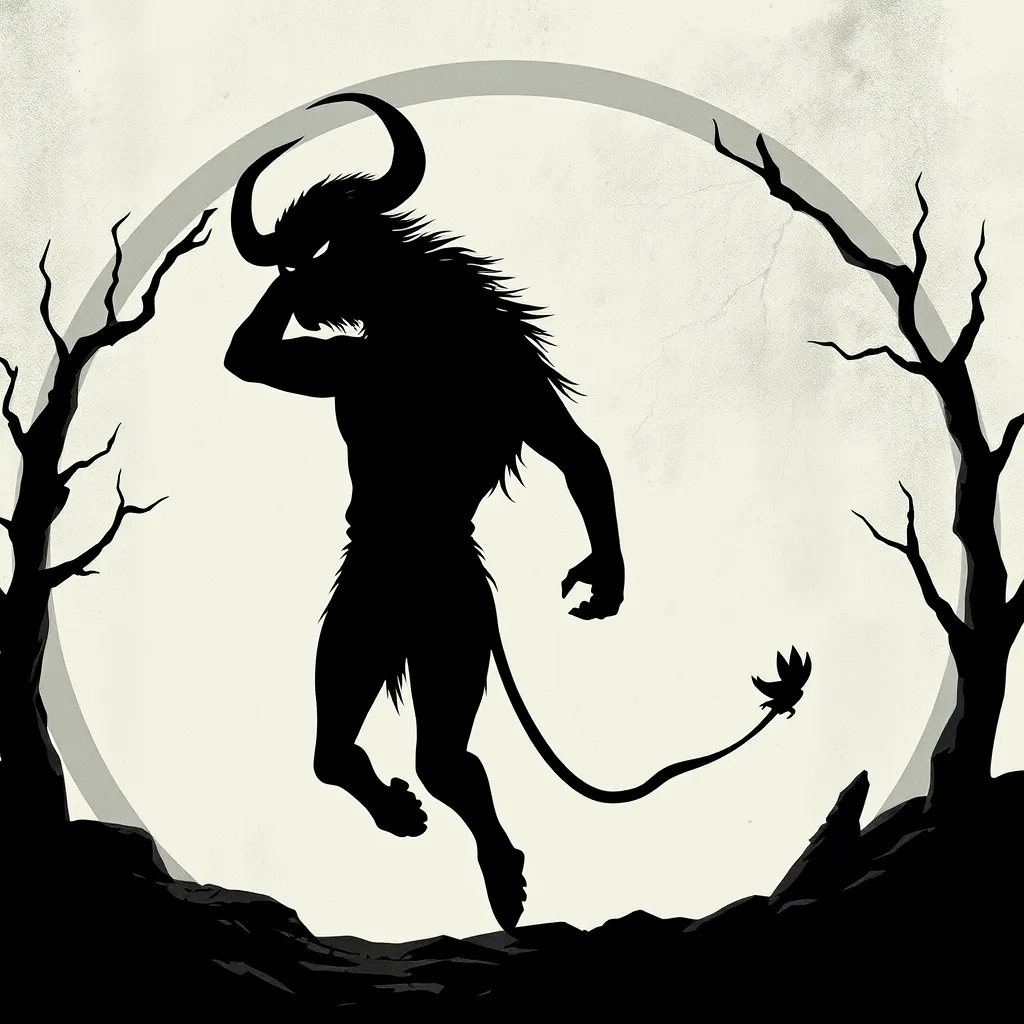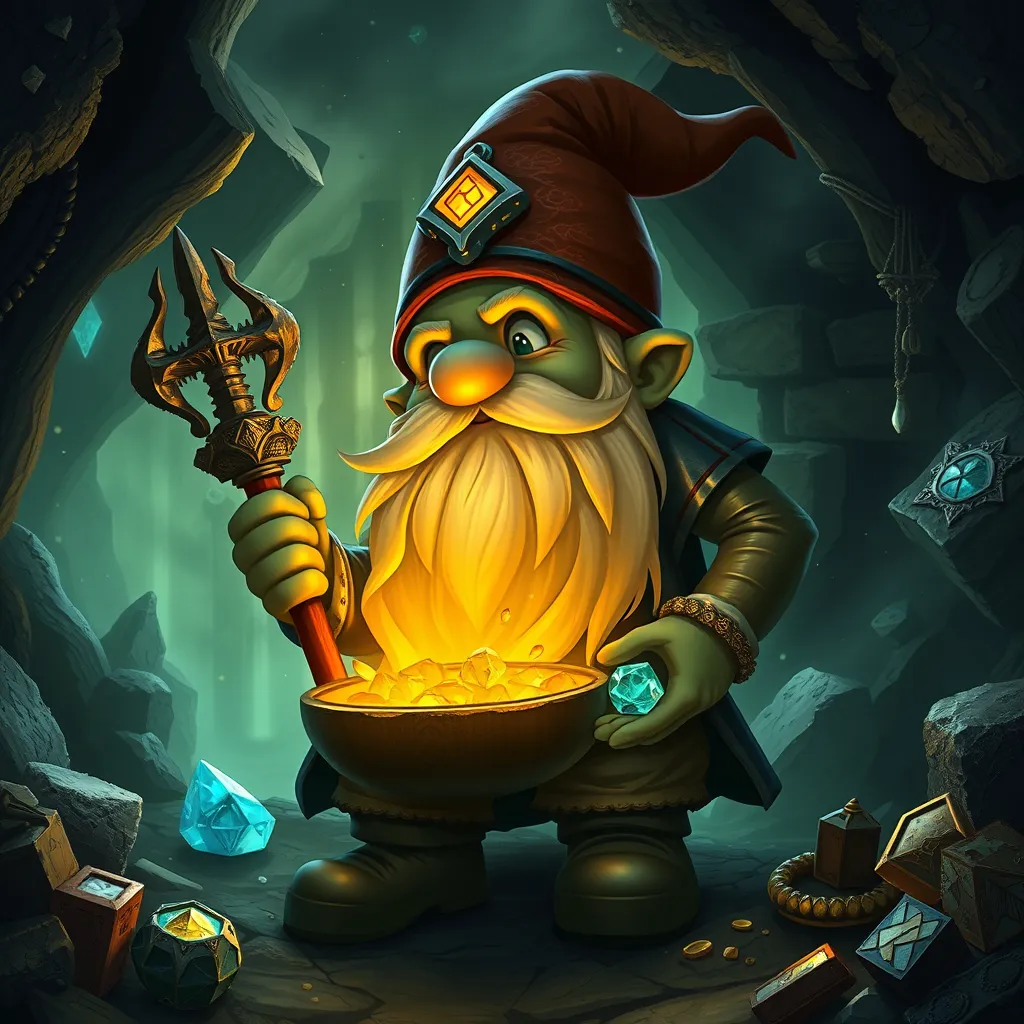The Minotaur’s Shadow: Examining the Monster’s Role in Psychological Studies
I. Introduction
The myth of the Minotaur, a creature with the body of a man and the head of a bull, has captivated the human imagination for centuries. Originating from ancient Greek mythology, the Minotaur resided in the labyrinth of Crete, a symbol of complexity and entrapment. This creature represents not just a physical monster but also the psychological struggles that individuals face within themselves.
Monsters, both real and metaphorical, play a significant role in psychology as they often symbolize the fears, anxieties, and conflicts lurking in our subconscious. This article aims to explore the Minotaur’s relevance in psychological studies, focusing on its symbolism, archetypal implications, and therapeutic applications.
II. The Minotaur as a Symbol of Inner Conflict
The Minotaur embodies a profound duality: it is both human and beast, representing the conflict between our civilized selves and our primal instincts. This dual nature can be examined through the lens of Jungian psychology, which introduces the concept of the shadow.
A. Understanding the Minotaur’s dual nature
The Minotaur’s existence in the labyrinth reflects the internal struggles that many people face, caught between their desires and societal expectations. It serves as a reminder of the darker aspects of human nature that are often repressed or hidden.
B. The concept of the shadow in Jungian psychology
In Jungian terms, the shadow represents the unconscious part of the personality that contains repressed weaknesses, desires, and instincts. The Minotaur can be viewed as a manifestation of this shadow, urging individuals to confront and integrate these hidden aspects into their conscious self.
C. Case studies illustrating inner conflict
Numerous case studies have highlighted how the Minotaur’s symbolism can be applied to real-life scenarios:
- Example 1: A client struggling with aggression may find that their anger is a “Minotaur” that they must face and understand to achieve emotional balance.
- Example 2: An individual grappling with self-identity issues may recognize their “inner Minotaur” as the part of themselves they fear to acknowledge.
III. Archetypes and Their Psychological Implications
Archetypes are universal symbols and themes that resonate across cultures and time, providing insight into the human experience. The Minotaur serves as a powerful archetype reflecting the repressed self.
A. Defining archetypes in psychology
Archetypes, as defined by Carl Jung, are innate patterns of thought and behavior that shape our experiences and perceptions. They help us navigate our emotions and relationships.
B. The Minotaur as a representation of the repressed self
The Minotaur represents the parts of ourselves that we may wish to hide or deny. By acknowledging this archetype, individuals can begin to explore their true selves and the emotions they suppress.
C. Implications for therapy and personal growth
Understanding the Minotaur as an archetype can facilitate personal growth in therapy. It encourages clients to confront their fears and integrate their shadow self, leading to a more authentic existence.
IV. The Minotaur in Modern Psychological Frameworks
In contemporary psychology, the Minotaur continues to find relevance, particularly in therapeutic settings. Its symbolism can be applied to various psychological frameworks.
A. Exploration of the Minotaur in contemporary psychology
Modern psychologists often draw parallels between the Minotaur myth and the psychological challenges faced by individuals today, using it as a metaphor for personal struggles.
B. Analysis of its relevance in cognitive-behavioral therapy
Cognitive-behavioral therapy (CBT) can utilize the Minotaur as a representation of irrational fears. By identifying and confronting these fears, clients can work towards changing their thought patterns.
C. The Minotaur’s role in narrative therapy
Narrative therapy invites individuals to tell their stories. Incorporating the Minotaur as a character in one’s narrative can help clients articulate their struggles and seek resolution.
V. The Minotaur and the Fear of the Unknown
Fear and anxiety are intrinsic to the human experience. The Minotaur serves as a powerful metaphor for confronting these fears.
A. The psychological impact of fear and anxiety
Fear of the unknown can paralyze individuals, preventing them from pursuing their goals and dreams. The Minotaur symbolizes that which we fear and avoid, often leading to stagnation.
B. The Minotaur as a metaphor for facing one’s fears
Engaging with the Minotaur can encourage individuals to confront their fears, thereby transforming them from monsters into manageable challenges.
C. Strategies to confront psychological monsters
Here are some strategies to confront psychological monsters:
- Journaling about fears to bring them into the light.
- Practicing mindfulness to observe and accept feelings without judgment.
- Seeking support from therapists to explore underlying issues.
VI. Cultural Interpretations of the Minotaur
The Minotaur myth has been interpreted in various ways across different cultures, reflecting the universality of its themes.
A. Variations of the Minotaur myth across cultures
Many cultures have their own interpretations of hybrid creatures that symbolize inner conflict and societal fears, showcasing the Minotaur’s widespread relevance.
B. The Minotaur in literature and art
The Minotaur has inspired countless works of literature and art, serving as a symbol of human struggle and the quest for identity.
C. Influence of cultural context on psychological interpretation
Cultural interpretations can shape how individuals perceive their own “monsters”, influencing their psychological responses and coping mechanisms.
VII. Therapeutic Approaches Inspired by the Minotaur Myth
Therapeutic approaches inspired by the Minotaur myth can offer unique pathways to understanding and integrating the shadow self.
A. Art therapy and the Minotaur
Art therapy allows individuals to express their inner turmoil creatively. Depicting the Minotaur can facilitate discussions about personal monsters and fears.
B. Role-playing and its benefits in understanding personal monsters
Role-playing exercises can help individuals externalize their fears, allowing them to confront and negotiate with their inner Minotaur.
C. Integration of mythological narratives in therapy
Incorporating mythological narratives like that of the Minotaur can provide clients with a framework to understand their struggles within a larger context.
VIII. Conclusion
The Minotaur remains a significant figure in psychological studies, symbolizing the inner conflicts and fears that reside within us all. By examining this myth, we gain insights into the complexities of human behavior and the importance of confronting our shadows.
As we navigate our personal labyrinths, the ongoing relevance of myths such as the Minotaur serves as a reminder to embrace our shadows and integrate them into our understanding of self. By doing so, we can transform our fears into sources of strength and resilience.




